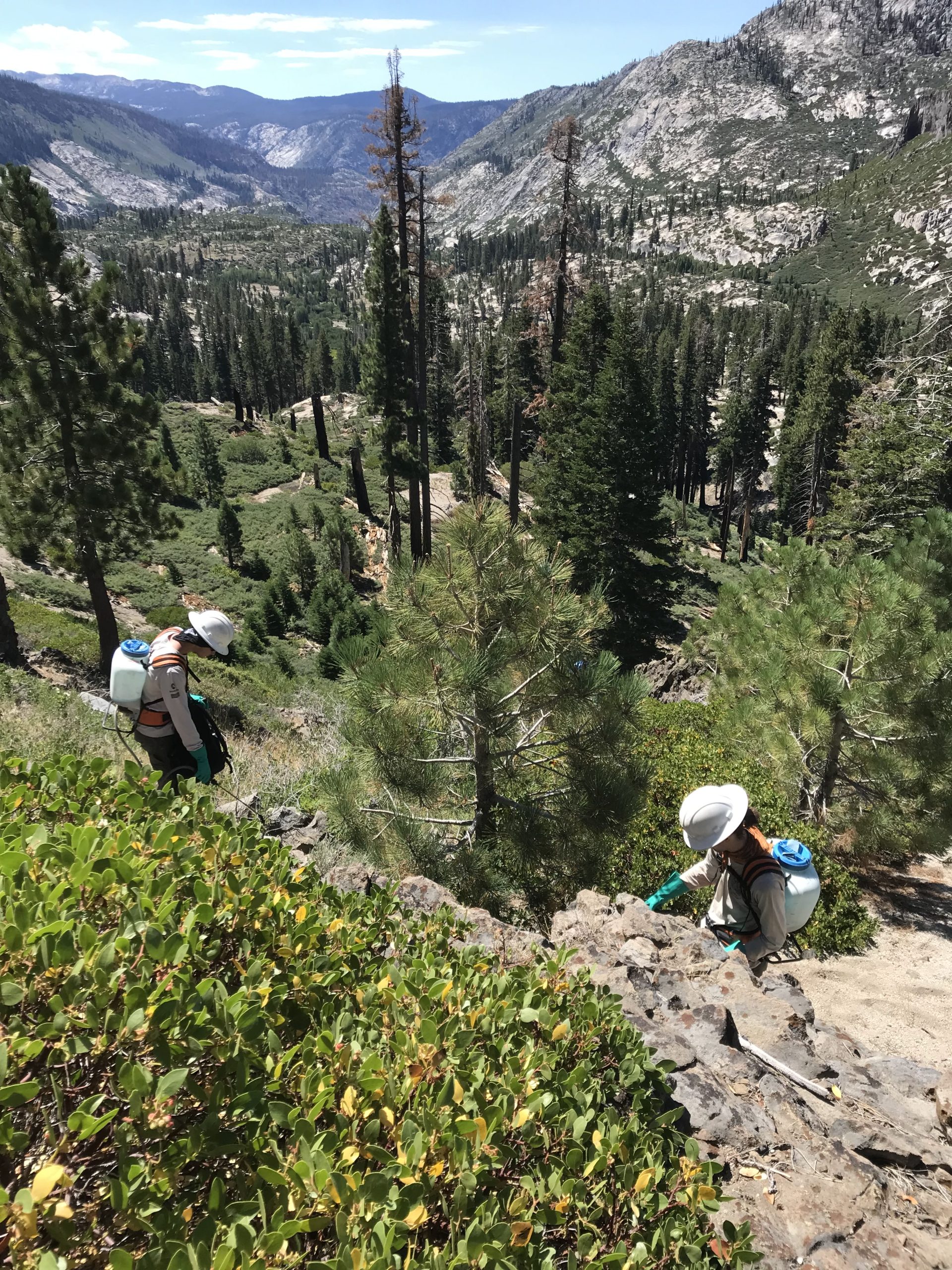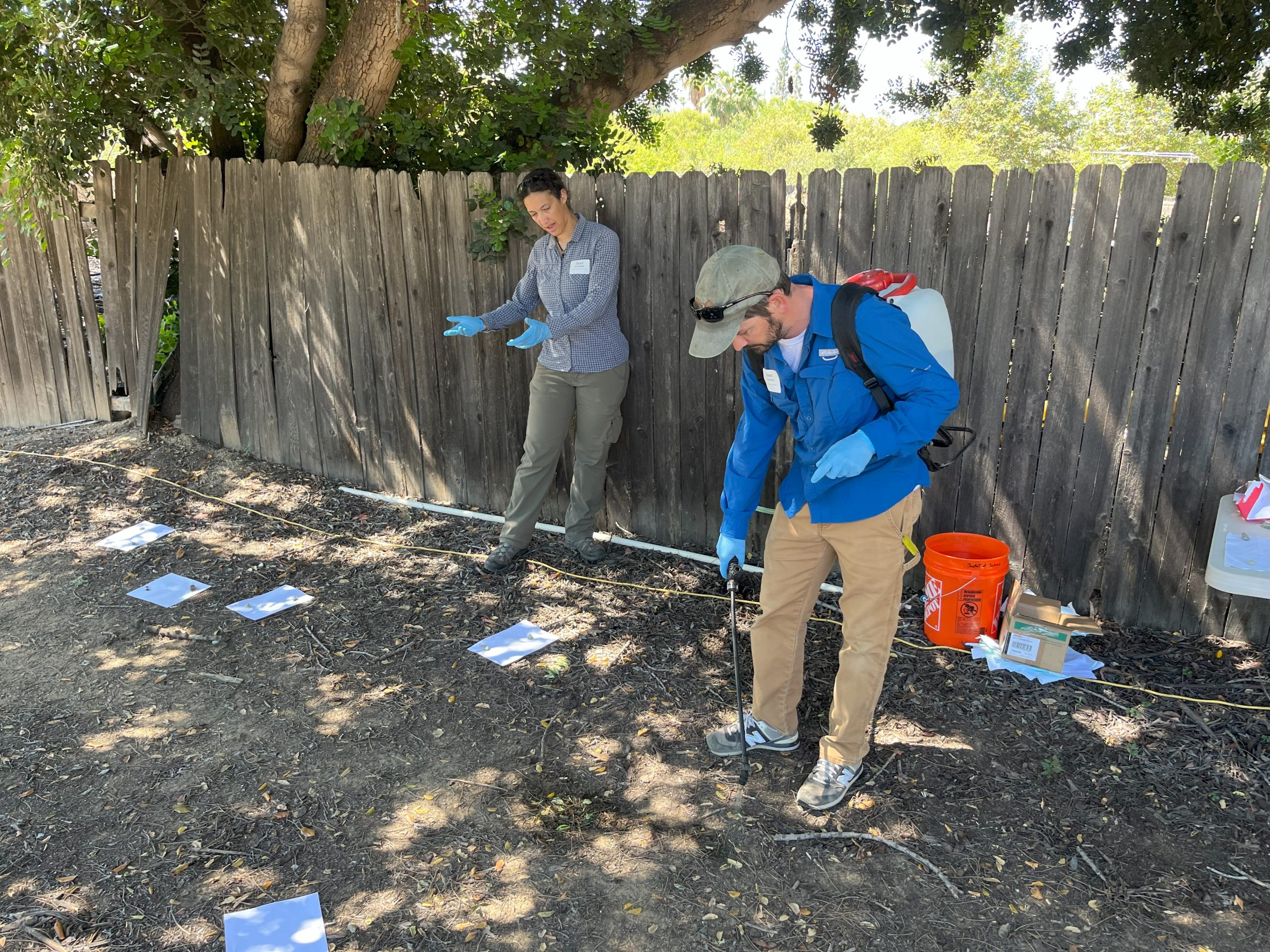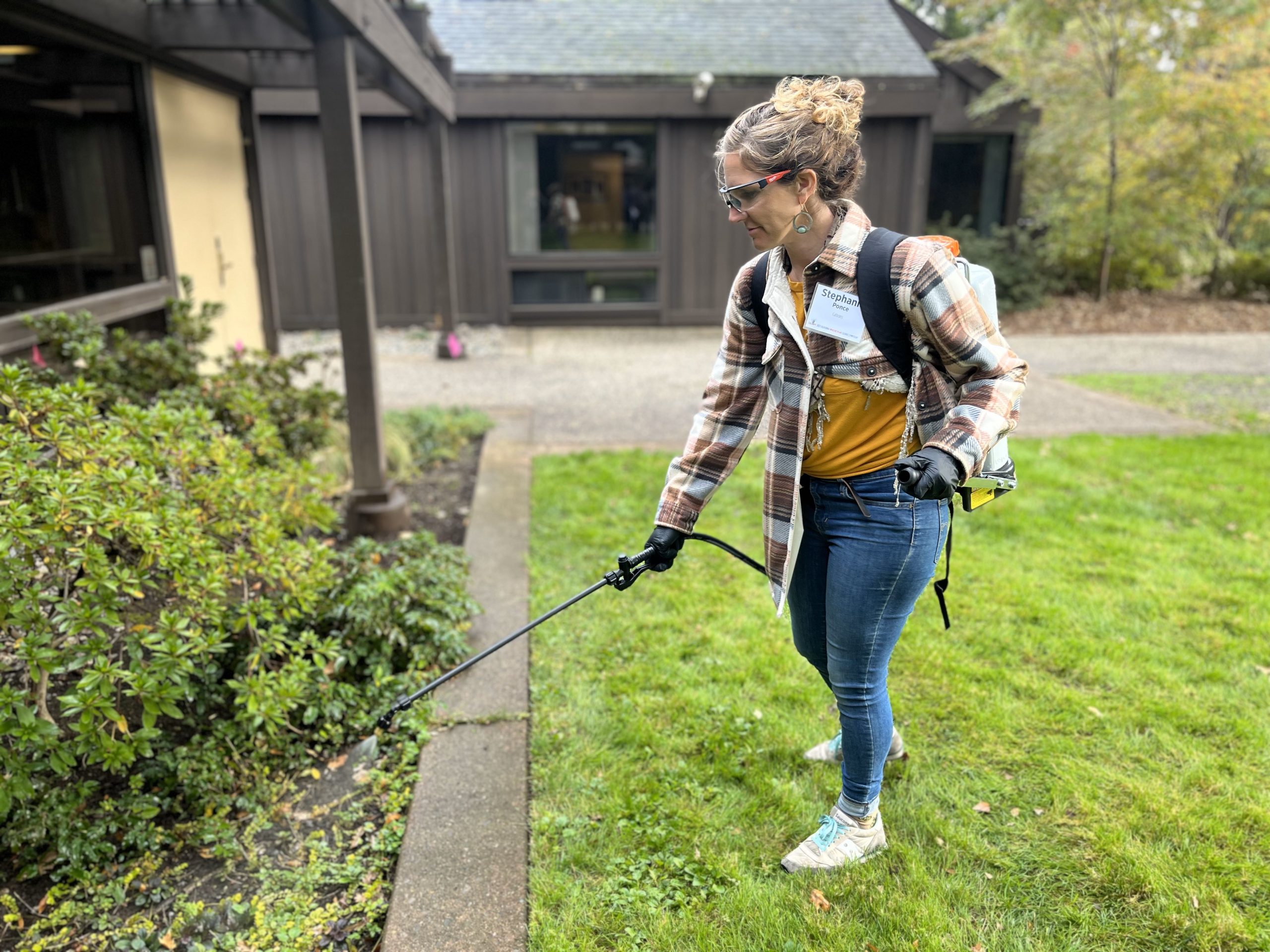Safe and effective herbicide use
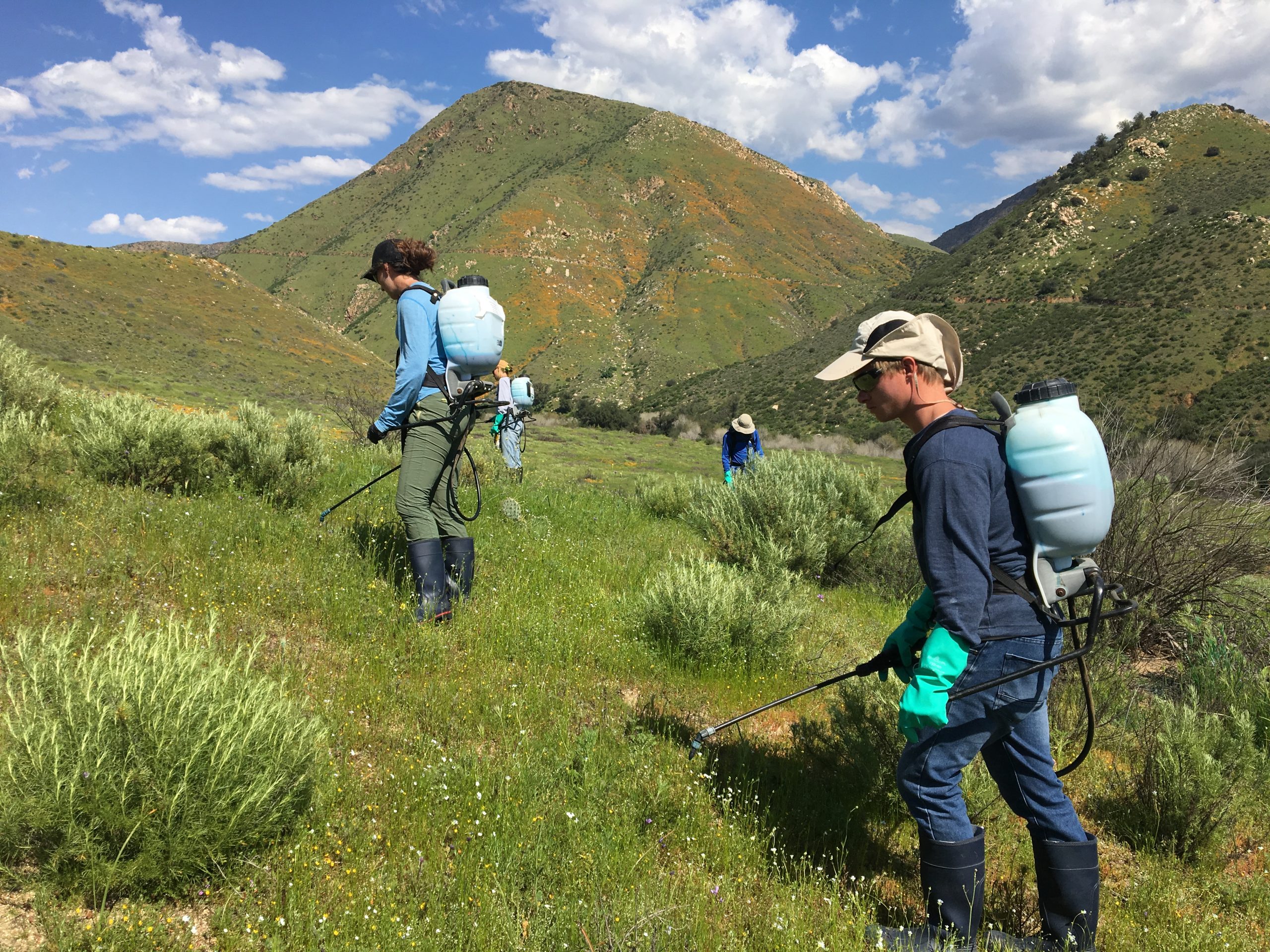
When used properly, herbicides can be a useful tool in the integrated weed management toolbox. Cal-IPC and the California Department of Pesticide Regulation (DPR) are working together to provide the best guidance for safe and effective herbicide use – to protect sensitive habitat, wildlife, and the people who work and play in California’s wildlands. Our goal is to provide land managers, restoration specialists, and other users with information on the situational effectiveness of all control methods, herbicide and non-herbicide, to guide and support their invasive plant control objectives and maximize the effectiveness of their chosen control methods.
Cal-IPC and our partners are working on two separate but closely related projects to increase the effectiveness of invasive plant control while reducing negative environmental impacts:
Best Management Practices (BMPs) for Herbicide-Based Approaches to Invasive Plant Management
In 2021, Cal-IPC, DPR, and a team of advisors created the Weed Control User Tool (WeedCUT), a decision support tool that provides guidance on a range of methods for managing invasive plants in wildlands using non-chemical approaches. We are in the process of expanding this tool to integrate guidance on when and where chemical treatment would be most effective. Once complete, this tool will provide land managers with the best available information on situation-specific methods for controlling invasive plants.
Mainstreaming Effective Herbicide Calibration for Wildland Weed Work
Calibration is the process of measuring and fine tuning the output of pesticide application equipment. This is an essential practice to ensure that herbicide treatments use the least amount of chemicals while still effectively controlling the targeted plants. The purpose of this project is to train applicators and other practitioners that work in wildland settings on herbicide calibration through the development and dissemination of in-person training sessions and web-based resources focused on proper calibration techniques for herbicide applications in wildlands.
Herbicide Calibration Training
Cal-IPC led two hands-on, in-person herbicide calibration trainings for wildland and non-row crop application, sponsored by the Department of Pesticide Regulation and the University of California Agriculture and Natural Resources. The training sessions focused on herbicide calibration and techniques for spot and broadcast spraying with backpacks, and woody plant treatments (stump cut, basal bark, drill and fill) in wildland and non-row crop settings. Calibration math, nozzles, and herbicide application basics were also covered.
Sessions were hosted at the Oakland Bridgeyard Building on March 1, 2024, and at the Saticoy Operations Yard on June 12, 2024.
Lead Instructors:
- Tom Getts, Weed Ecology and Cropping Systems Advisor – UC Cooperative Extension
- Chris McDonald Ph.D., Inland and Natural Resource Advisor – UC Cooperative Extension
- Scott Oneto, Farm Advisor – UC Cooperative Extension
Plants being managed
Start date
2021Location
Statewide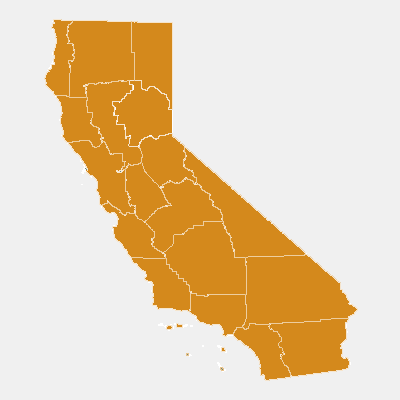
Resources protected
Biodiversity, wildlands, firebreaks, human infrastructure
Project goal
These projects aim to reduce the overapplication of pesticides, increase the precision of applications thereby reducing offsite impacts, and increase the effectiveness of herbicide treatments on invasive plants in wildlands by educating wildland IPM practitioners on herbicide calibration and situation-specific methods for controlling invasive plants.
Project partners
Project funders
Project photos
